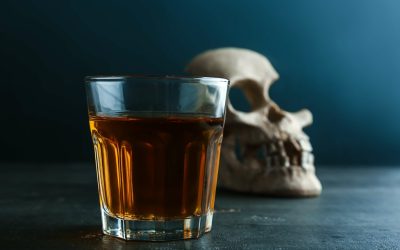Ekstra kazanç için oyuncular Bahsegel seçeneklerini değerlendiriyor.
Their dependence probably developed at a young age as well, maybe when they were about 18. In addition, these patients have the second-highest incomes and educational levels of the five groups; only functional alcoholics are ahead of them in these areas. One bright spot is that members of this group are the most likely to get help for their addiction. Indeed, people in this group are the most likely to face serious mental health challenges such as panic disorder, generalized anxiety, bipolar disorder, and severe depression.


Therefore, Psychology Today reports that they often deny they have a problem with alcohol and are less likely to seek professional help. More than 80% of this group experiences acute alcohol withdrawal and persistent efforts to cut down, and more than 90% experience drinking despite the problems it causes them and drinking larger amounts and for longer than intended. This group also tends to spend significant amounts of time recovering from alcohol, and many experience reduced activities due to drinking. This group also sees the highest rate of emergency room visits due to drinking. They usually begin drinking at 18, don't become dependent until around 37. Forty-seven percent suffer from major depression, 22 percent from bipolar disorder.
What Are the Different Types of Alcoholics?
Not only does it take just a few minutes to complete, but it can also actually give you the push you need to finally seek help and treatment. As you read through these different subtypes of alcoholism, maybe some of these signs have sounded just a little bit too familiar. However, Young Adult Alcoholics are also more likely to engage in hazardous behaviors like drinking than most other groups and also experiencing alcohol withdrawals. If you or a loved one is ready to overcome an alcohol addiction, reach out today. Treatment providers can connect you with programs that provide the tools to help you get and stay sober. Young adult alcoholics tend to consume alcohol less often than those in other categories, but they’re more likely to binge drink when they do.

Another type of alcoholic is known as the young antisocial subtype. Someone who is a young adult subtype alcoholic might have an average of 14 drinks a day when they drink. As was mentioned above, some people believe there are seven types of alcoholics.
Besides Chronic Severe Alcoholics, that makes this type the most likely to have an alcoholic home growing up. Young Antisocial Alcoholics are actually the second most prevalent type of problem drinker, though it's close to Intermediate Familial and Functional Alcoholics. Around 21.1% of people who have an alcohol use disorder will fall into this subtype. The Young Antisocial Alcoholic is often around 26.4 years old but started drinking much earlier than others at around 15 years of age. Added to that, their problematic alcohol use disorder usually starts at about 18 years old.
Understanding the Five Types of Alcoholics
With the development of better measurement techniques and research methods, however, empirical research on typologies gained momentum. Several studies using this approach indicated that alcoholic subtypes defined by single dimensions could indeed be differentiated in predictable ways on a variety of other dimensions . The study also demonstrated, however, that various typological criteria other than gender—such as psychopathology, sex-linked physiological characteristics, and socially defined gender roles—could better explain these differences. NIH reports that most smoke cigarettes, and as many as one out of every five also struggles with issues related to marijuana and cocaine abuse. Most intermediate familial alcoholics are gainfully employed, and many are married with families.
- Members of this group have high rates of antisocial personality and substance abuse disorders, including addictions to cocaine, meth or opioids.
- Some alcoholics may be able to hide their drinking fairly well and appear to be on the ball at work and at home.
- You are likely to seek help for your drinking and may have already been through a treatment program.
- In 2013, the National Survey on Drug Use and Health reported that of those who needed treatment and didn’t receive it, approximately 95.5 percent didn’t feel they needed it.
- The type of alcoholic can also be determined by any additional mental health diagnoses.
- One of the most concerning aspects about alcoholism in this age group is the damage alcohol can do to the brain, as the brain is still developing in important areas, such as in the prefrontal cortex.
And, when people are dealing with an antisocial disorder, they may rely on alcohol to lower their inhibitions, making them feel more social. Group members are more likely to be unmarried college students without full-time jobs and drink less frequently than the other groups but are more prone to binge drinking. They’re mostly male and rarely seek help for their alcoholism, but when they do, they usually turn to 12-step programs. According to a 2021 Gallup study, 60% of adults are alcohol drinkers, and 18% sometimes drink too much. While there are many types of alcoholics, people don’t have to be raging alcoholics to have a drinking problem.
Conversely, hereditary causes include constitutional conditions, such as distinct neurotic and psychopathic disorders that often are traceable to ancestors. The unitary disease concept, as illustrated in “The Drunkard’s Progress,” by Nathaniel Currier. Typology theorists believe this is an inadequate representation of the heterogeneity of etiologies and drinking patterns. © Alcohol Research Documentation, Inc., Rutgers University Center of Alcohol Studies. Call us today to learn more about our alcohol rehab center near Las Vegas, amenities, and evidence-based therapies. You may also struggle with clinical depression and possibly with bipolar disorder.
This group also is very likely to experience addiction to cigarettes, Marijuana, Cocaine, and Opioids. Chronic severe alcoholics usually have a family history of alcoholism and suffer from co-occurring mental health disorders at very high rates. Chronic severe alcoholics often smoke and may also suffer from cocaine, opioid, and/or marijuana dependence in addition to alcohol addiction. This subtype of alcoholics is the most likely to seek treatment and the most heavily represented type of alcoholic in a treatment program. About two-thirds of chronic severe alcoholics get help for their drinking. This group tends to start drinking at the youngest age and also develops an alcohol dependence at the earliest age .
Alcoholism Treatment Options
Two-thirds of this subtype have sought help for their alcoholism at some point, making them by far the most likely to have done so. They have the highest rate of seeking treatment at an inpatient program and also seek out help from private physicians, psychiatrists, and social workers at high rates. The chronic severe subtype is the least prevalent, accounting for only about 9 percent of alcoholics.

Reliance on any information provided by this website is solely at your own risk. If you suspect that you or a loved one is facing alcoholism, there’s no time to delay. The sooner you seek treatment for yourself or someone else, the more likely you will prevent a severe accident or another devastating consequence.
They typically drink every other day, consuming five or more drinks on average, and they often surround themselves with others who drink heavily. DrugRehab.com provides information regarding illicit and prescription drug addiction, the various populations at risk for the disease, current statistics and trends, and psychological disorders that often accompany addiction. You will also find information on spotting the signs and symptoms of substance use and hotlines for immediate assistance. In fact, denial is so rampant among addicts that a whopping 96.7% of alcoholics don't seek treatment simply because they don't think they really have a problem according to national surveys. They're mostly middle-aged and have had a long history of drinking uncontrollably, usually beginning their pattern of abuse early in their life before their twenties. The early onset of drinking is one of the best indicators for a likelihood of later-life alcoholism.
There are many types of alcoholics, depending on the person’s reason for drinking, age and other factors. In the past, identification methods for alcoholic subtypes focused on drinkers who were hospitalized or receiving some other type of medical treatment. Delta – Rather than “losing control”, alcoholics at this stage will be unable to refrain from drinking. During this stage of alcoholism, the person in the delta phase needs alcohol to get through the day. Primary or “true” alcoholics are characterized by their immediate liking for alcohol’s effects, the rapid development of an uncontrollable need for alcohol, and their inability to abstain.
Studies like this one help expand the ways we can approach alcoholism to help those in need the most effectively. If no two people are alike, then no 15 million people can possibly be alike either. These new types help scientists and healthcare specialists create more appropriate prescriptions to treat this deadly disease. It has the highest rate of alcohol-related trips to emergency rooms. On top of that, many chronic severe alcoholics have criminal records or other legal troubles to contend with. However, generally speaking, medically assisted detox and withdrawal, as well as cognitive behavioral therapy or a combination of these modalities, remain the most effective treatment for alcohol use disorder.
Nearly half of those within this category smoked before their alcohol abuse and one third came from families with generational alcohol abuse issues. Because their homes and jobs are generally stable, functional alcoholics often choose not to pursue help with their alcoholism. The young adult type is the largest group in the list and is composed of individuals who started drinking at around age 19 and subsequently developed alcohol dependence at an average age of around 24 years old. On the other hand, the young antisocial type is made up of alcoholics who have antisocial personality disorder . Young antisocial alcoholics often begin drinking at age 15 and tend to become alcoholics at around age 18. This subtype is what’s commonly known as “functional alcoholics.” Accounting for 19.5% of alcoholics, this group is typically middle-aged people who start drinking early but develop alcohol dependence later .
Functional
Members of different kinds of alcoholics often seek self-help groups, 12-step programs, and treatment from healthcare providers as their treatment options. These treatments are similarly used for anyone who suffers from alcohol use disorder. Members of this group have high rates of antisocial personality and substance abuse disorders, including addictions to cocaine, meth or opioids. They’re also likely to have bipolar disorder, depression or social phobia. They’re 75% male and start drinking and develop alcohol dependence at the youngest ages among all subtypes — 15 and 18, respectively.
Alcoholics are unable to control how much and how often they drink, and generally, they are unable to stop drinking on their own. Alcoholism is a diverse and complicated disease, and there are many factors that can make one person more vulnerable than another to suffer from it. Biological and environmental factors, as well as a person’s age when they first drink alcohol, can also be contributing factors to alcohol abuse, dependence, and addiction.
Plus, the peers of the young adult subtype are not always aware of the warning signs of alcoholism and can easily excuse away abnormal drinking behaviors. This is the rarest and most dangerous type of alcoholism,making up 9.2% of alcoholics. They begin drinking aroundage 16and develop alcohol dependence later,around 29 years of age. This group has the highest rates of drinking, consuming alcohol on anaverage of almost 248 days a yearand binge drinking on69%of them with a maximum of 15 drinks. A history of alcoholism in first-degree relatives also has been used frequently as a typological criterion in the post-Jellinek period.
About 25the last house sober living and recovery community in this group suffered from some sort of drinking issues in the past. More alarmingly, 25% of this sub-set was reported to be suffering from clinical depression. Alcoholism within the family also tends to be pervasive among this group. Alcohol dependence in this group is often not acknowledged by the drinker who believes they are able to cope without serious consequences. On average, they drink about 143 days each year, and they typically consume five or more drinks at a time.
2025 yılında yepyeni özellikler sunacak olan https://movikv.com sabırsızlıkla bekleniyor.


Her an her yerde erişim için Bahsegel uygulaması kullanılıyor.